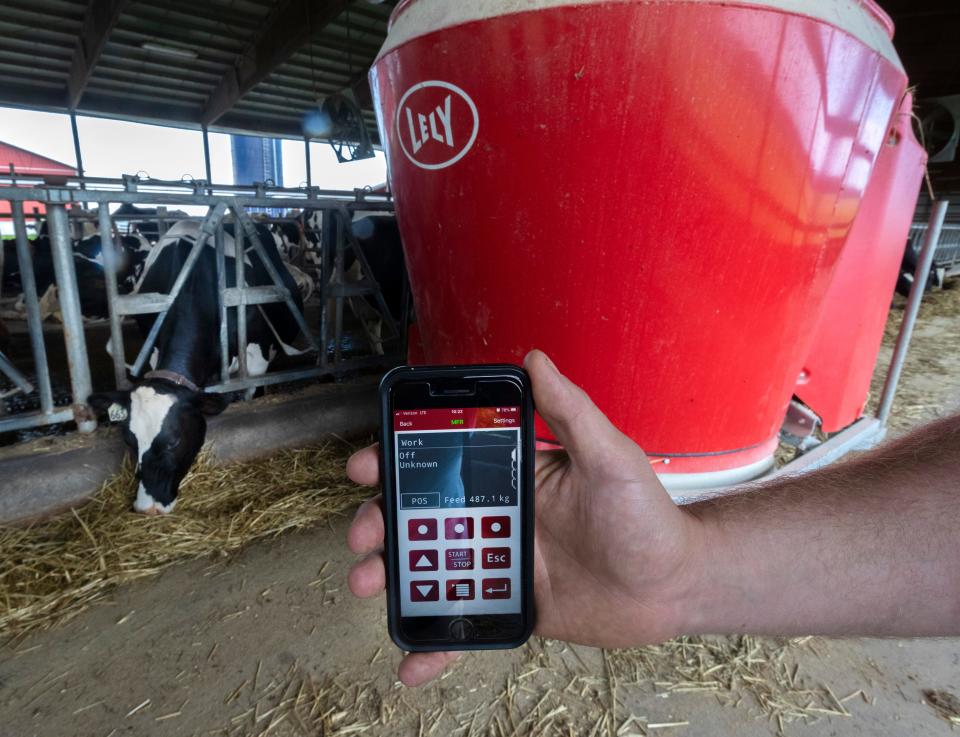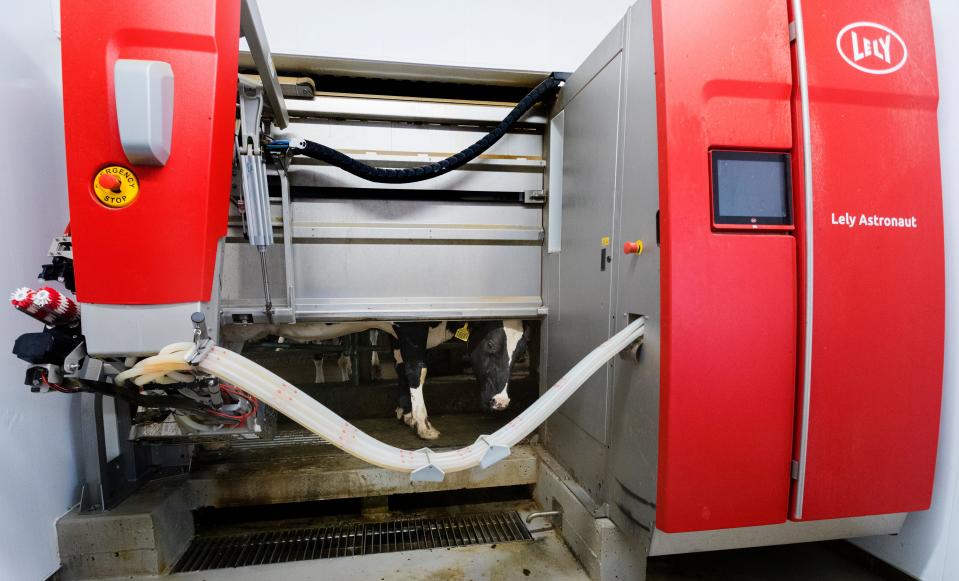Kathleen Gallagher: Wisconsin and other Midwest states must urgently join the digital transformation of agriculture

Sen. John Hoeven (R-North Dakota) in late August announced he’d secured $1 million from a division of the U.S. Department of Agriculture for a cooperative agreement to enhance precision agriculture research in his home state.
That followed Governor Doug Burgum’s announcement earlier this year that North Dakota would use federal funds to issue a $10 million grant to advance autonomous agriculture technology in the state.
The recipient in both cases: Fargo-based Grand Farm.
Conceived in 2017 to attract new business and innovation to North Dakota, Grand Farm is a hotbed of experimentation into supply chain, autonomous logistics, edge computing, carbon marketplaces, soil compaction and other areas that will shape the future of agriculture. Along with projects run by partners in its innovation fields, Grand Farm has an associated startup accelerator, a coding and software development bootcamp, and hosts conferences and events.
In short, Grand Farm is a neutral platform where farmers, industry, higher education and government can collaborate on building an ecosystem to participate in what global consulting firm McKinsey & Company in a 2020 report called the digital, connectivity-fueled transformation of agriculture.
We’re in the early days of this transformation. And it feels like the Great Lakes states need to move faster or risk falling behind in an industry that is vital to the economy of the region.
We’ve prospered in the past because the region has the best agricultural land on the continent and has been able to keep pace with the mechanical and genetic advances in agriculture. Our companies made more powerful and efficient farm machinery and created more productive seed and fertilizers.
But this digital transformation requires a new perspective and skill set.
Can't depend on the weather alone
For generations we’ve relied on Mother Nature to protect our agricultural economy, but that gig is up. Pollution, global warming and consumer waste are challenging the sustainability of industrialized economies everywhere in the world. Air, water, and soil composition now require much more attention than in the past. Farm animals and livestock are increasingly stressed by extreme weather and communicable diseases that until recently were rarely a problem.
Tech-savvy leaders are developing expertise around drone surveillance and remote monitoring of crops, soil conditions and livestock. Autonomous electric vehicles and remotely guided robots operating 24/7 using artificial intelligence and climate-focused big data are the new world of AgTech.
Grand Farm’s effort to build a connected infrastructure that uses the newest digital tools provides a model for creating other centers of excellence that attract market partners and investors. Just look at some of the partners Grand Farm has pulled in: Both of North Dakota’s large public universities; tech companies like Microsoft; established ag companies like CHS and Land O’Lakes; and emerging agricultural companies like CarbonSpace and Intelligent Ag Solutions.
That constellation, and the investors it attracts can potentially create a new ecosystem that will disrupt established market participants. Consider farm equipment.
“Big-machinery manufacturers are not putting their money into manufacturing agricultural robots because it goes against their current business models,” Simon Blackmore, an engineer at Harper Adams University in Newport, UK, said in a 2017 article in the journal Nature called “Technology: The Future of Agriculture.”
Apparently, at least some big machinery makers don’t see a large enough market to move the sales needle. Yet McKinsey says the digital transformation will create $500 billion of value in global gross domestic product by 2030. Go ahead, scratch your head over some of our industrial companies that remain on the sidelines. Isn’t a farm just a factory without walls?

Startups often lead the way
It’s often startups like Pittsburgh-based Bloomfield Robotics, co-founded by Carnegie Mellon researcher George Kantor, that are plowing the new ground. Bloomfield, which has raised about $12 million of investment capital, uses deep learning and portable cameras to assess one by one the health and performance of plants.
Unfortunately, there are a lot more startups like Bloomfield in California than there are in the Midwest.
California since 2015 has had about 5% more venture capital deals in the agriculture sector than a whopping 15 states in the middle of the country including North Dakota, Illinois, Indiana, Michigan, Minnesota and Wisconsin, says Tom Chapman, founder of Omaha consulting firm Chapman Co. That’s according to his analysis of data from Pitchbook, which collects venture capital, private equity and M&A information.
Those 15 states, by the way, have a combined population of around 80 million - about double that of California.
Emerging agriculture companies in California have received three times more investment than companies here since the beginning of 2015, Chapman says. And there have been 130% more investors engaged with those Golden State companies.
“Even though there were only 100 more deals in California than in the Midwest, the largest investments have happened in California,” Chapman says.
Coastal startups gain edge on Midwest
California investors are doing more deals, teaming with more established market partners, and doubling down on the ones they like best. Which means those coastal startups are gaining the kind of edge that our companies had in past decades.
Venture capitalists are attracted to communities where creative people seek change and are willing to commit their time and talent to making things different, maybe even better. These types of people are rare and communities of them are small, but they are the growth engines for a region – they create high value-added businesses that pay high salaries and propel the entire economy.
Multi-participant, collaborative initiatives like the Grand Farm are a good way to pull together those creative people who want to make things different. To increase the odds of inventing something that will accelerate the digital transformation of the Great Lakes economy, more centers of excellence need to take shape in the region.
North Dakota is whispering in the ear of our Great Lakes economic leaders. Are we listening?
Kathleen Gallagher was a business reporter at the Milwaukee Journal Sentinel and the Milwaukee Sentinel for 23 years. She was one of two reporters on the team that won a 2011 Pulitzer Prize for the One in a Billion series. Gallagher is now executive director of 5 Lakes Institute, a nonprofit working to grow the Great Lakes region's high technology entrepreneurial economy and culture. She can be reached at Kathleen@5lakesinstitute.org.
Our subscribers make this reporting possible. Please consider supporting local journalism by subscribing to the Journal Sentinel at jsonline.com/deal.
DOWNLOAD THE APP: Get the latest news, sports and more
This article originally appeared on Milwaukee Journal Sentinel: Gallagher: Agriculture is changing rapidly, and Wisconsin is lagging
